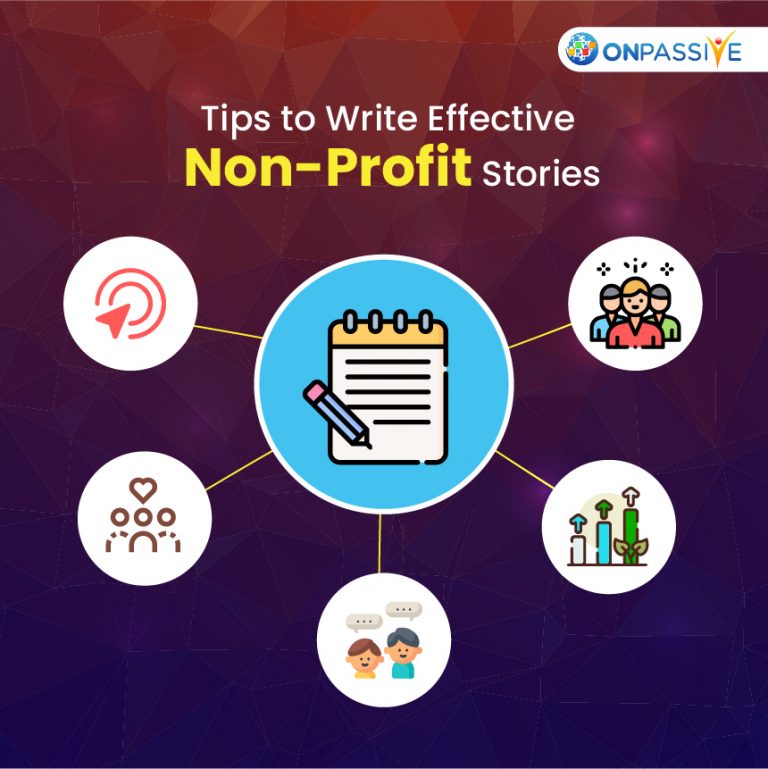
Everyone is a storyteller in their own way. Although many people don’t realize their creative or artistic side of storytelling, each individual grows by gaining knowledge and sharing stories with others right from childhood, starting from the school books to the moral lessons taught by the elders.
Stories help people to understand each other and the world in a much better way. Similarly, nonprofit companies or organizations need to rely on stories in order to connect with their supporters and audience while building a community around their goal or mission.
Nonprofits can illustrate the identified problems, articulate solutions, and develop a strong emotional connection to attract donors or supporters using stories.
Why does storytelling matter?
Storytelling has always been the best form of communicating messages for ages. Therefore, stories can be incredible tools for nonprofits to raise awareness among people, fundraising activities, building trust, mobilizing volunteers, and much more.
Storytelling matters because:
- Stories help create a context
- Stories evoke strong connections
- Stories influence and motivate people to act
Currently, stories have become an integral part of marketing. In many cases, businesses use stories in ads to position their products or services and aim to revolve the story around a solution offered through the product or brand to a problem faced by customers.
Organizations make use of product packaging, advertising or online presence to show customers what problems they solve and why people need to buy their products or service.
In the present competitive world, communication and storytelling give businesses a chance to develop a strong connection with the customer base. Non-profits can take the best advantage of story-based marketing regardless of their size and budget.
Nonprofits need to focus on connecting their stories to a cause and organize social programs to create impact among people while coming up with new stories every day. Irrespective of the size of your nonprofit, using compelling stories helps you build a solid emotional connection with donors.
To be able to resonate with the audience, stories need to be simple and told in a way that strikes the right chords with all the essential elements, including a beginning, a middle, and the end. With the help of the story, you can demonstrate to people how your organization makes the world a better place.
Tips to Write Effective Non-Profit Stories
- Ensure your stories are Focused and Relevant
Make sure your stories are relevant and focus on summarizing the work done by the organization and avoid including irrelevant information. Add all the relevant details to the story to make it rich to create an impact among the readers.
- Deliver the story with Multiple Perspectives
Try to communicate your organization’s impact at an individual, regional, and community level to create multi-level perspectives. Although each story is aimed at reaching entire communities or groups, quotes can help bring focus on individuals.
- Understand your Audience
Most of the stories are universal, and the basic structure of the story works well with everyone. However, understanding your audience is essential and helps you prepare stories so that it resonates to them. This enables organizations to tell stories with different protagonists from different perspectives in different formats.
- Find fresh perspectives
Storytelling with an organizations voice can have a powerful impact. Make sure to find new and fresh perspectives to tell a story to have a more powerful impact.
Nonprofits can have an alternate employee, volunteer or contributor to share their perspectives. By having stories from different perspectives, organizations can have the benefit of telling the story of peoples lives through their eyes.
- Include a Call to Action (CTA)
Make sure to include a call to action at the end of every good story. The CTA need to be relevant to the story told by you. It can even be a donation button that the supporters and donors can click to help or support a cause or a person mentioned in the story.
Mediums or Tools of storytelling
Nonprofits can make use of various communication channels and mediums to market their stories and share their content in order to motivate the audience and supporters through multiple tools.
Some of the storytelling mediums are as follows:
- Website and Blog
- Stories through Email
- Videos to covey the cause
- Social media posts and stories
Track the stories after sharing them on various mediums. By tracking the number of clicks, likes, favourites, vote-ups, and retweets organizations can easily understand how successful their stories are and use these insights for future stories.
Conclusion
Impactful stories are essential tools for nonprofits that can be integrated into a comprehensive marketing campaign of nonprofit organizations.
Various crowdfunding platforms, such as ONPASSIVE’s “O-Bless” in the market, are being developed to bring people together to relate them to specific causes that matter to the community. These channels can be effective to help you reach the right set of individuals who can help you and make a difference by supporting your cause.
Therefore, nonprofits can use such platforms to create an impact, build a strong connection with readers, and reach the right set of supporters and donors with powerful stories.


